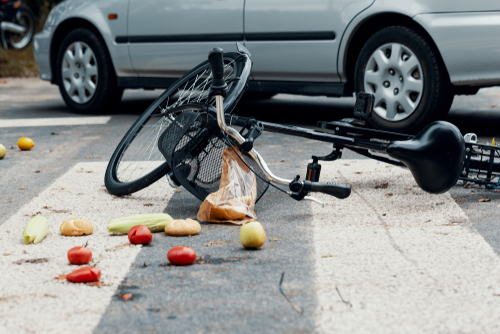Bicycling is a popular hobby in the state of Virginia, in addition to being an environmentally friendly form of transportation. Unfortunately, it can be dangerous for cyclists to share the road with other motorists. Bike accidents resulting from collisions with motor vehicles end up causing serious and potentially life-threatening injuries. According to data collected by the Pedestrian and Bicycle Information Center, almost 1,000 cyclists are killed each year after being hit by a vehicle. Unlike occupants in a vehicle, a person on a bike is completely unprotected in a crash, leaving them especially vulnerable to catastrophic injuries. Adhering to bicycle safety laws can help keep cyclists safe. In the unfortunate event of an accident, if your Virginia Beach bike accident attorney can show that you were obeying the law, it can help prove the liability of the driver who hit you.
Know Where and How to Ride
Under Section 46.2-905 of the Code of Virginia, bicycles are classified as vehicles. Cyclists are granted all the rights and responsibilities as vehicle drivers – with certain exceptions. The following are some of the rules of the road that cyclists must follow:
- Cyclists must ride with the flow of traffic on the right side of the highway.
- Cyclists shall ride as close as safely practicable to the right curb or edge of the roadway. Exceptions to this are:
- When a cyclist is overtaking and passing another vehicle proceeding in the same direction.
- Preparing for a left turn, avoiding unsafe conditions, and avoiding riding in a lane that turns or diverges to the right.
- Riding on a one-way street where cyclists may ride near the left-hand curb or edge of the roadway.
- When the lane width is too narrow to share with a motor vehicle.
- Cyclists must not ride between two lanes of traffic moving in the same direction unless one lane is a separate or mandatory turn lane.
- Cyclists are not permitted to ride on interstate and certain controlled access highways unless the operation is limited to bicycle or pedestrian facilities that are barrier-separated from the roadway and automobile traffic. The restricted sections of the highways will be marked with signage.
- Bicycles may be ridden on sidewalks unless prohibited by local ordinances or traffic control devices. While on sidewalks and shared-use paths, bicyclists must always yield the right of way to pedestrians and give an audible signal before passing a pedestrian.
- Cyclists pulling onto a sidewalk or highway from a driveway must yield the right of way to pedestrians or vehicles already on the sidewalk or highway.
Other rules that cyclists are required to follow include:
Use of Lights and Reflectors
From sundown to sunup, you must have a forward-facing light and a rear reflector. This also applies if you are riding in low-visibility conditions. The white front light should be visible from at least 500 feet away, and the red rear reflector or light should be visible from at least 600 feet away.
Signals and Signaling
Cyclists must use hand signals to indicate their intention to turn or stop. To signal a left turn, extend the left arm horizontally. To signal a right turn, extend the left arm upward or extend the right arm horizontally. To signal a stop, extend the left arm downward.
Stopping at Stop Signs and Traffic Signals
Cyclists are required to obey all traffic signs and signals, including stop signs and traffic lights. When approaching a stop sign or traffic signal, cyclists must come to a complete stop and yield to other vehicles and pedestrians as necessary. Failure to stop at stop signs or traffic signals can result in citations and jeopardize safety.
Cyclists Also Have the Rights of Pedestrians
Although a bicycle is considered a vehicle under Virginia law, the law grants cyclists the same rights as pedestrians. These laws will apply if a cyclist is struck by a vehicle driver who fails to obey these rules of the road.
For example, according to Va. Code § 46.2-924, motorists must yield to right-of-way to a bicyclist crossing a roadway in any clearly marked crosswalk or any intersection with a speed limit less than thirty-five miles per hour. Vehicles entering, crossing, or turning at intersections must change course, slow down, or stop to allow the bicyclist to cross the intersection safely.
Virginia also requires motorists to follow the Three Foot Rule. This law states that a motorist “shall pass at a reasonable speed at least three feet to the left of the overtaken bicycle.” If the lane is not wide enough to allow three feet of space, then the motorist must change lanes to pass.
Call Our Personal Injury Law Firm Today
If you are a cyclist who was injured in a bike accident, do not delay contacting Shapiro, Washburn & Sharp to find out what legal options you may have to pursue damages for your losses. We will work aggressively to get you the financial compensation you deserve, like the $450,000 insurance settlement we recently obtained for one client, a UVA student who suffered a nasty fracture in her foot and various traumatic injuries when a driver who was attempting to take a left turn slammed their vehicle into her.
Contact our office today to schedule a free consultation with one of our dedicated Virginia Beach bike accident attorneys. For your convenience, we also have offices in Norfolk, Hampton, Portsmouth, and Chesapeake.
RELATED CONTENT
- Bicycle Accidents and Virginia Right of Way Laws
- Pedestrians and Crosswalks – Pedestrian Personal Injuries and Laws in Virginia
- Bicycle Accident Claims
